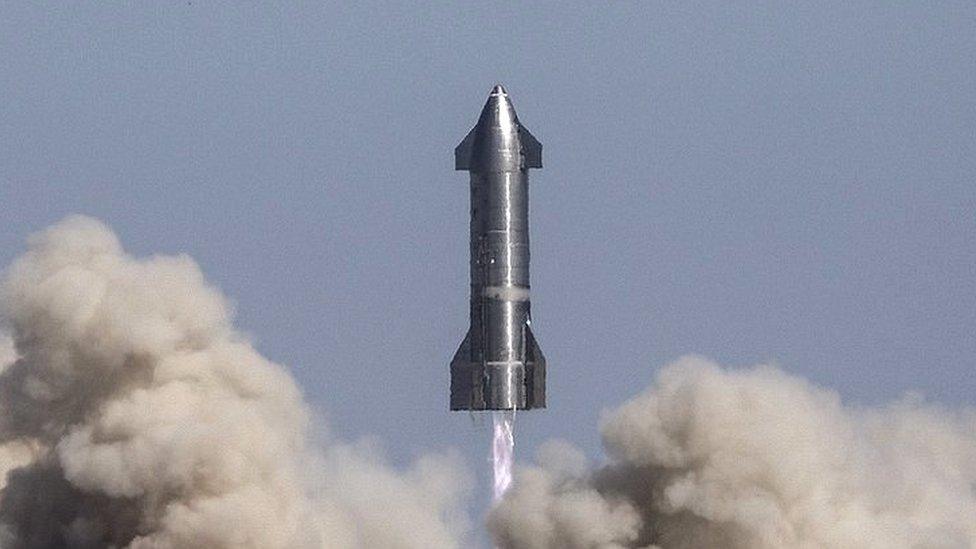SpaceX: Starship prototype flies again but crashes again
- Published
Watch the Starship test flight from beginning to end
SpaceX has launched another of its Starship prototypes, and once again just failed to pull off the landing.
The uncrewed vehicle, codenamed SN9, climbed to 10km (6 miles) above the Texas Gulf coast, and then descended to try to put down under control a short distance from where it had lifted off.
When the company tried this last month with its SN8 model, the flight ended in an explosive impact with the ground.
SN9 didn't fare much better, slamming into the landing pad in flames.
Nonetheless, SpaceX said a huge amount of data would be gained, and its engineers would press on with the programme.
"Remember, this was a test flight, (only) the second time we've flown Starship in this configuration," said regular SpaceX webcast commentator John Insprucker.
"We've just got to work on that landing a little bit. But we'll find out from the team as they go through the data. We were in contact with telemetry all the way down. So all told, another great (test)."
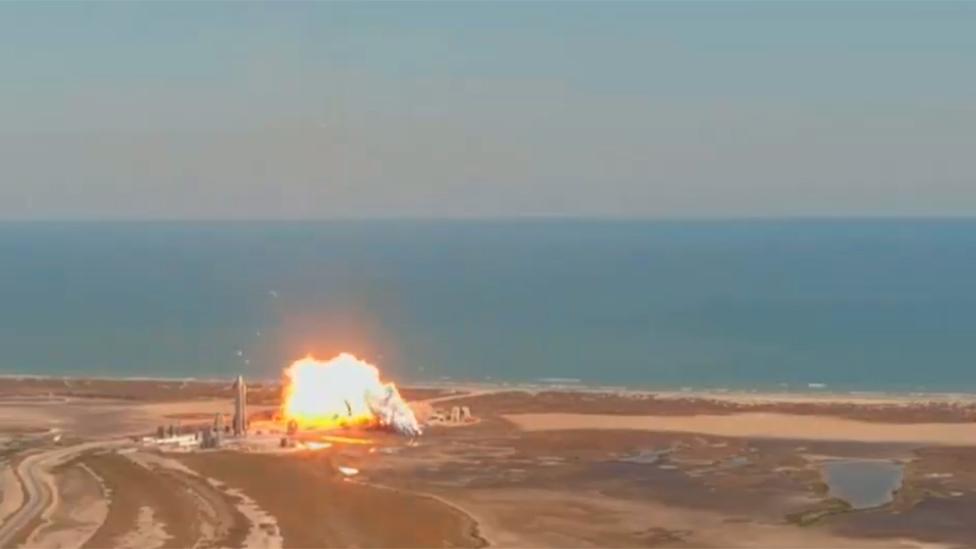
Another explosive encounter with the Boca Chica beachfront
The 50m-tall Starship is a concept for future space transportation.
SpaceX CEO Elon Musk believes that once fully developed, the vehicle will be capable of taking people to the Moon and Mars. It could also ferry people quickly around the globe. Putting satellites in orbit is another obvious application.
The Starship's design is making rapid progress at the company's R&D facility near the small coastal village of Boca Chica on the US border with Mexico.
SpaceX's mantra is to learn by flying, to iterate and then to fly again.
SN9, the latest model, was cleared to launch only after receiving the necessary Federal Aviation Administration approvals, which came early on Tuesday.
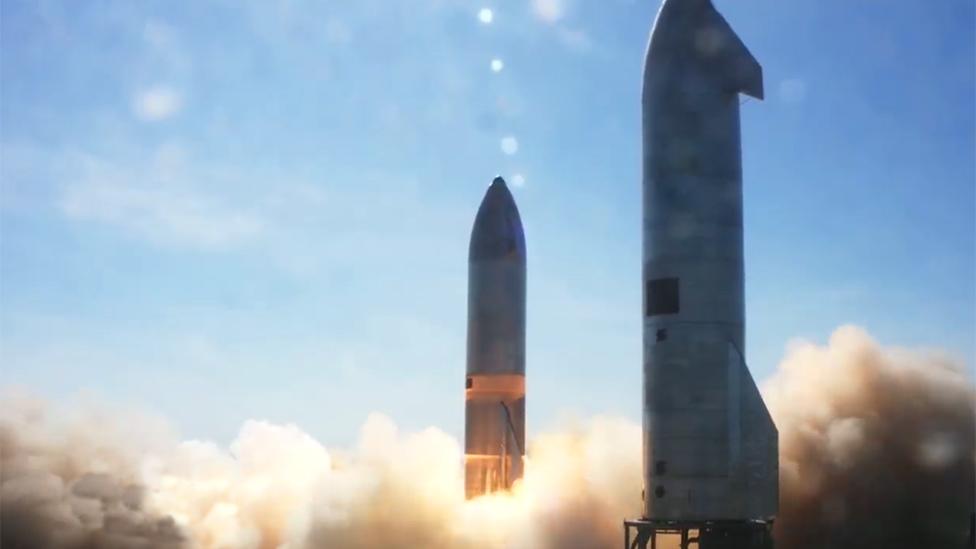
SN9 lifted off next to the waiting SN10, which will be next to fly
Like SN8 before it, the vehicle was sent skyward by its three methane-burning Raptor engines. These were commanded to shut down in sequence as the prototype reached its target altitude.
Then, at the top of the climb, the Starship tipped over into the horizontal to begin the return to the ground.
This belly-flop descent, controlled by large flaps at either end of the vehicle, is intended to simulate how future, operational Starships will re-enter the Earth's atmosphere from orbit, presenting a large surface area to the direction of travel to scrub off speed.
The vehicle is supposed to transition back to a tail-down configuration just before reaching the surface, re-igniting two Raptor engines to slow the fall to a walking pace at landing. But it appeared that SN9 only managed to light one engine properly. The vehicle was engulfed in flames as it impacted the concrete pad.

SpaceX already has SN10 on a mount ready for the next experimental flight. Further prototypes are at various stages of assembly at Boca Chica.
The Starship will eventually launch atop a booster called the Super Heavy.
This will feature perhaps 28 Raptors, producing more than 70 meganewtons (16 million lbs) of thrust. That's much more than even the mighty Apollo Saturn 5 rocket, which sent men to the Moon.
When combined, both parts of the new SpaceX system - Starship and the Super Heavy booster - will stand about 120m tall on the launch pad.
The two elements are being designed to be fully reusable, making propulsive landings at the end of each mission.
Mr Musk has stated that Starship is now the number-one priority for SpaceX, beyond the Falcon rockets it currently routinely flies to serve satellite operators, the US Air Force and the US space agency (Nasa).
Nasa has already asked Mr Musk to examine the possibility of landing a Starship on the lunar surface in the next few years.
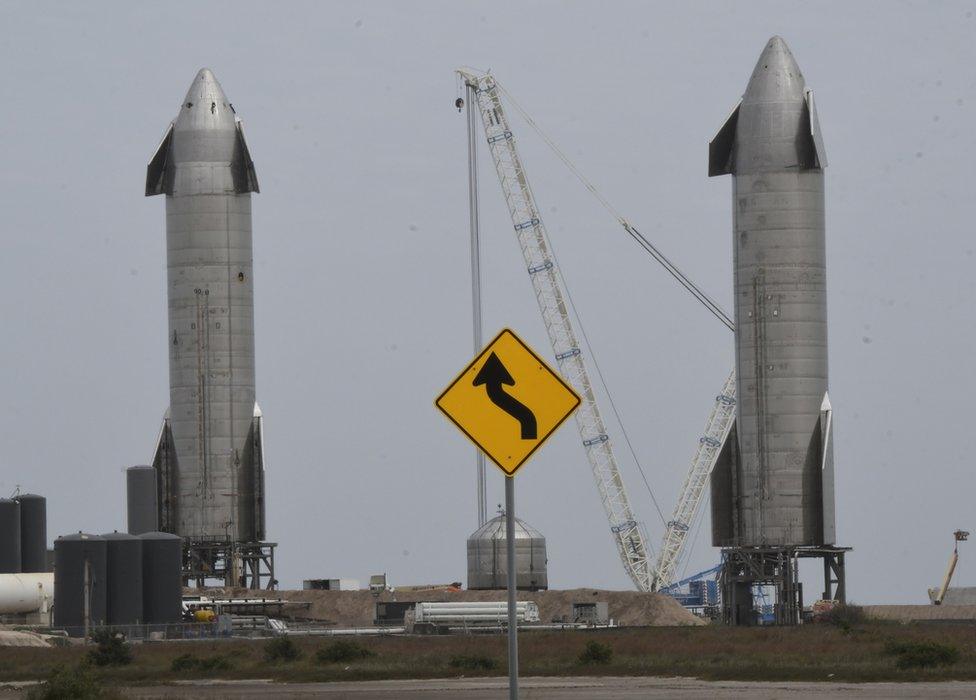
SN9 and SN10 prototypes lined up on their launch mounts prior to Tuesday's flight
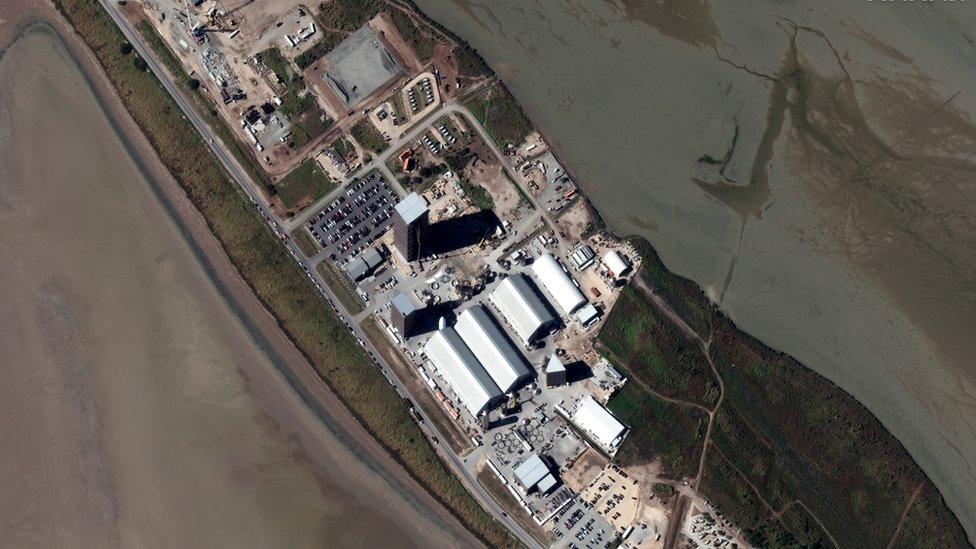
The Boca Chica R&D facility on the US/Mexico border
- Published17 April 2023
